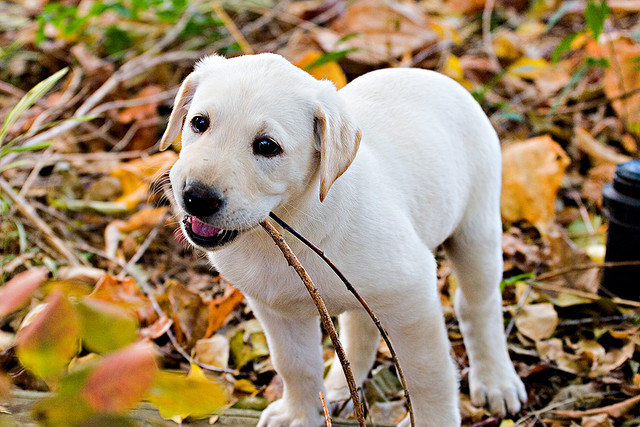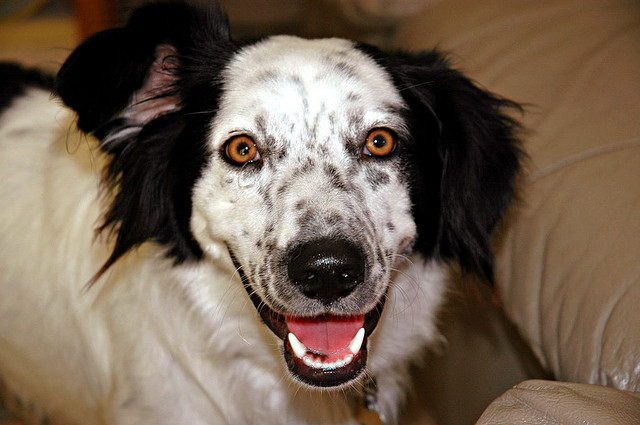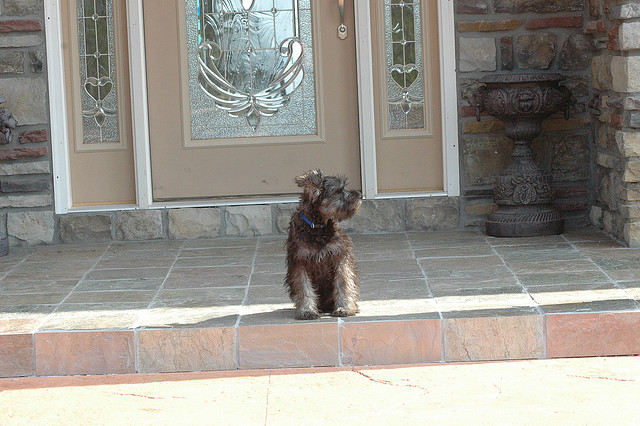Puppies like to explore and figure out what things are by taking little nips and bites at them. They also tend to use it a a control or some sort of dominance. It is important to recognize this behavior and learn how to deal with it correctly right off the bat.
Below are some tips on how to care for and train your puppy:
Bite Inhibition: Teach Your Puppy to Be Gentle – Bite inhibition refers to a dog’s ability to control the force of his mouthing. A puppy or dog who hasn’t learned bite inhibition with people doesn’t recognize the sensitivity of human skin, and so he bites too hard, even in play. Some behaviorists and trainers believe that a dog who has learned to use his mouth gently when interacting with people will be less likely to bite hard and break skin if he ever bites someone in a situation apart from play-like when he’s afraid or in pain.
What to Do Next: Teach Your Puppy That Teeth Don’t Belong on Human Skin
- Substitute a toy or chew bone when your puppy tries to gnaw on fingers or toes.
- Puppies often mouth on people’s hands when stroked, patted and scratched (unless they’re sleepy or distracted). If your puppy gets all riled up when you pet him, distract him by feeding him small treats from your other hand. This will help your puppy get used to being touched without mouthing.
- Encourage noncontact forms of play, such as fetch and tug-of-war, rather than wrestling and rough play with your hands. (Refer to our article, Teaching your Dog to Play Fetch, to learn more about this game.) To keep tug-of-war safe and fun for you and your puppy, you’ll need to follow strict rules. Please see our article, Teaching Your Dog to Play Tug-of-War, for detailed guidelines. Once your puppy can play tug safely, keep tug toys in your pocket or have them easily accessible. If he starts to mouth you, you can immediately redirect him to the tug toy. Ideally, he’ll start to anticipate and look for a toy when he feels like mouthing.
- If your puppy bites at your feet and ankles, carry his favorite tug toy in your pocket. Whenever he ambushes you, instantly stop moving your feet. Take out the tug toy and wave it enticingly. When your puppy grabs the toy, start moving again. If you don’t happen to have the toy available, just freeze and wait for your puppy to stop mouthing you. The second he stops, praise and get a toy to reward him. Repeat these steps until your puppy gets used to watching you move around without going after your feet or ankles.
- Provide plenty of interesting and new toys so that your puppy will play with them instead of gnawing on you or your clothing.
- Provide plenty of opportunities for your puppy to play with other puppies and with friendly, vaccinated adult dogs. Playing and socializing with dog buddies is important for your puppy’s development-and if he expends a lot of his energy playing with other puppies, he’ll feel less motivated to play roughly with you. Consider enrolling your puppy in a good puppy class, where he can have supervised playtime with other puppies and learn some important new skills! Please see our article, Finding Professional Help, to locate a Certified Professional Dog Trainer (CPDT) in your area who offers puppy classes.
- Use a time-out procedure, just like the one described above-but change the rules a little. Instead of giving your puppy time-outs for hard biting, start to give him time-outs every time you feel his teeth touch your skin.
- The instant you feel your puppy’s teeth touch you, give a high-pitched yelp. Then immediately walk away from him. Ignore him for 30 to 60 seconds. If your puppy follows you or continues to bite and nip at you, leave the room for 30 to 60 seconds. (Be sure that the room is “puppy-proofed” before you leave your puppy alone in it. Don’t leave him in an area with things he might destroy or things that might hurt him.) After the brief time-out, return to the room and calmly resume whatever you were doing with your puppy.
- Alternatively, you can keep a leash attached to your puppy during time-out training and let it drag on the floor when you’re there to supervise him. Then, instead of leaving the room when your puppy mouths you, you can take hold of his leash and lead him to a quiet area, tether him, and turn your back to him for the brief time-out. Then untie him and resume whatever you were doing.
- If a time-out isn’t viable or effective, consider using a taste deterrent, such as Grannick’s Bitter Apple®. (For more information on taste deterrents and how to use them, please see our article, Using Taste Deterrents.) Spray areas of your body and clothing that your puppy likes to mouth before you start interacting with him. If he mouths you or your clothing, stop moving and wait for him to react to the bad taste of the deterrent. Praise him lavishly when he lets go of you. Apply the bad taste to your body and clothes for at least two weeks. After two weeks of being punished by the bitter taste every time he mouths you, your puppy will likely learn to inhibit his mouthy behavior.
- Be patient and understanding. Playful mouthing is normal behavior for a puppy or young dog.
When Does Mouthing Become Aggression?Most puppy mouthing is normal behavior. However, some puppies bite out of fear or frustration, and this type of biting can signal problems with future aggression.
Puppy “Temper Tantrums”
Puppies sometimes have temper tantrums. Usually tantrums happen when you’re making a puppy do something he doesn’t like. Something as benign as simply holding your puppy still or handling his body might upset him. Tantrums can also happen when play escalates. (Even human “puppies” can have tantrums during play when they get overexcited or upset!) A puppy temper tantrum is more serious than playful mouthing, but it isn’t always easy to tell the difference between the two. In most cases, a playful puppy will have a relaxed body and face. His muzzle might look wrinkled, but you won’t see a lot of tension in his facial muscles. If your puppy has a temper tantrum, his body might look very stiff or frozen. He might pull his lips back to expose his teeth or growl. Almost always, his bites will be much more painful than normal mouthing during play.
If you’re holding or handling your puppy and he starts to throw a temper tantrum, avoid yelping like you’re hurt. Doing that might actually cause your puppy to continue or intensify his aggressive behavior. Instead, be very calm and unemotional. Don’t hurt your puppy, but continue to hold him firmly without constriction, if possible, until he stops struggling. After he’s quieted down for just a second or two, let him go. Then make plans to contact a qualified professional for help. Repeated bouts of biting in frustration are not something that the puppy will simply grow out of, so your puppy’s behavior should be assessed and resolved as soon as possible.
Do you have any experience with a biting puppy? Can you share some tips with us below on how to deal with them properly?





Leave a Reply